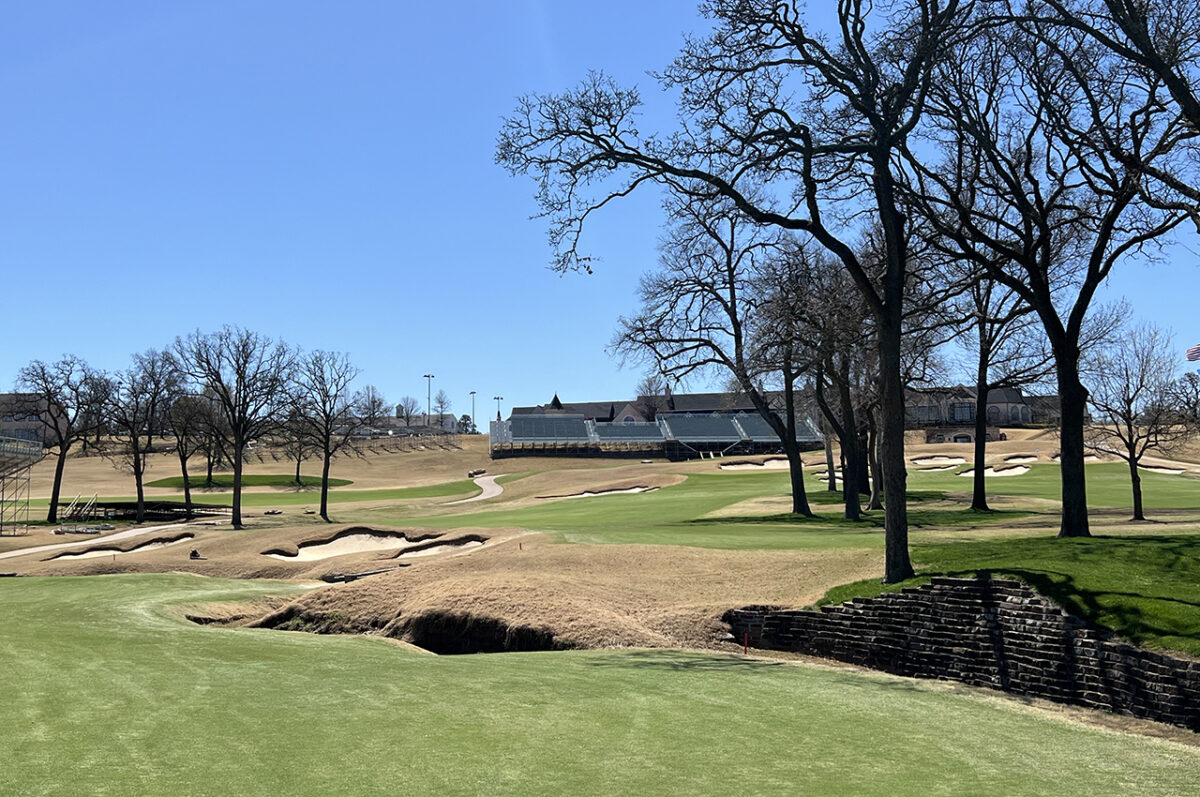TULSA, Okla. — Gil Hanse was tasked with a challenge.
Restoring an old golf course while preparing it to host future major championships. Southern Hills Country Club was his canvas.
The course is considered one of the best designs from Perry Maxwell, a world-renowned golf architect who also created Dornick Hills in Ardmore and Twin Hills in Oklahoma City.
Southern Hills was constructed during the Great Depression when a group of citizens in Tulsa raised $140,000 for a new country club. Local oil baron Waite Phillips donated a tract of land south of downtown.
Maxwell was known for creating golf courses as cost effective as possible, using contours of the land to shape holes and guide the property. That’s what he did with Southern Hills.
It opened in 1936 and quickly became a site for major golf tournaments. It hosted the 1946 U.S. Women’s Amateur and the 1958 U.S. Junior Championship before the first men’s major, the 1958 U.S. Open, came to Tulsa.

Half a century later, the 2007 PGA Championship came to town. Tiger Woods captured the 13th of his 15 major championships, and since, Southern Hills has gone through extensive changes.
Although the layout of the course is similar, Hanse’s renovation, which took 10 months and cost $11 million, changed the future of Southern Hills while bringing it back to its foundation.
The course is more prepared now for the modern era of golf to remain a viable championship host. It also more closely resembles Maxwell’s original design, from the bunkers to the greens and the hole layouts.
Come May 19-22, when the PGA Championship returns to Southern Hills for the fifth time, Hanse will find out if his work accomplished what he set out to do.
Hanse began consulting with Southern Hills in 2015. The club wanted to have its course challenge the best golfers in the world, and Hanse wanted to maintain Maxwell’s original design.
Between hosting the 2001 U.S. Open and 2007 PGA Championship, Southern Hills underwent renovations that included removing trees, expanding fairways and restoring greens.
Yet the property had waltzed far from its original intentions, which is what Hanse wanted to restore.
Work started with the greens, specifically the edges. The restoration before the 2007 PGA meant golf balls tended to funnel to the center of the greens from the edges. After Hanse’s changes, that wasn’t the case.
Hanse and his team stripped away the edges of the greens and restored edge conditions, meaning instead of a ball being funneled toward the center of the hole, a shot left on the outskirts would likely fall off.
That accomplished both of Hanse’s goals, making the greens more similar to Maxwell’s original design while strengthening the natural defense of the course. Golfers would be forced to think about numerous aspects of their approach shots, placing a premium on the angle and trajectory, among other things.
The greens also have a hydronics system underneath to help with heating and cooling.
The bunkers also changed extensively. They returned to more irregular patterns with manicured edges.
Hanse also restored creeks that originally ran across the 10th and 17th fairways, which in the 1930s remained mostly dry. Because of run-off from neighboring properties, Southern Hills receives plenty of water in its creeks in the modern day.
Some of the major hole changes are seen on the 1st and 7th.

On the first hole, bunkers were moved from the right to left side of the fairway, placing a premium on positioning off the elevated tee. With a green that slopes away from the fairway and to the left, the more left a tee shot is, the better angle for the approach shot.
This change gives players an added challenge. For the best chance at a strong approach shot, a tee shot hit closer to the left bunkers is required.
Originally, there were no fairway bunkers on the 1st, but they were added before the first U.S. Open in 1958.
The 7th has drastic changes. First, the green was moved back about 40 yards and to the right, with its right edge hugging a creek. There are also two bunkers left, placing a premium on a strong approach shot.
The lengthening of the hole also means more decisions to be made off the tee. Now at roughly 440 yards, players can no longer hit a wood or long iron off the tee and have a shot iron or wedge into the green. Any shots on the left side of the fairway will be on an uneven lie, with the ball wanting to go toward the water on approach.
Any tee shot to the right, though it will leave an easier approach shot, it could find trouble with the creek or trees.
The course will also play more than 300 yards longer than it did in 2007, coming it at nearly 7,500 yards.
The golf world got a preview of what the new Southern Hills is when it hosted the 2021 Senior PGA Championship last May. Even after a brutal two-week cold spell in February that resulted in the club having to re-turf plenty of grass because of winter kill, the tournament was a success, and the course stood out.
Yet its biggest test awaits with the return of Southern Hills eighth men’s major championship. It’s on that stage the world will see Hanse’s full renovation and restoration.
[listicle id=778059049]
